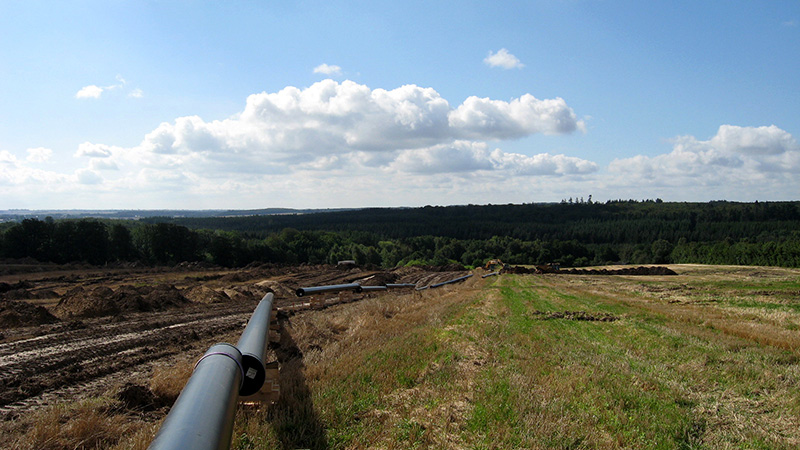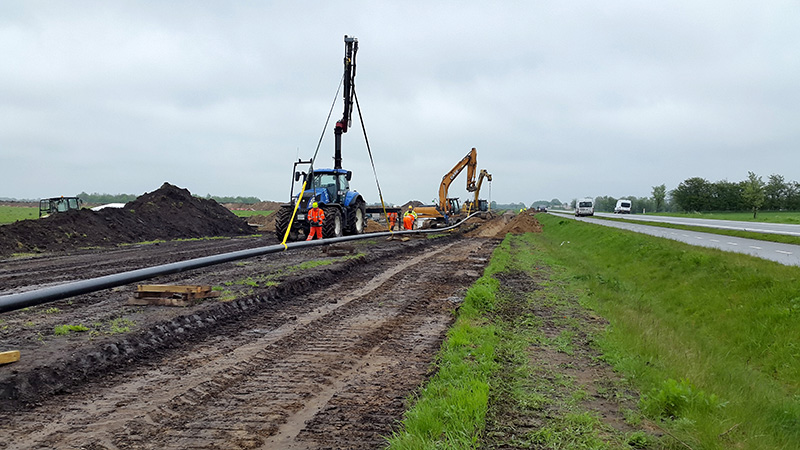About
CO2 and hydrogen transport via pipeline infrastructure is critical to more CCU in Denmark, considering the expected need to transport larger quantities of CO2 and hydrogen over longer distances. Through technical and economic feasibility studies, this project will clarify the potential and challenges of this form of CO2 and hydrogen transport. The transport will be connected to potential PtX consumers in order to clarify the potential for future piping for PtX production in northern Jutland, covering a selected distance, of approx. 40 kilometres belt across North Jutland, including areas of Mariagerfjord municipality.
Today, the vast majority of hydrogen is transported in pressure tanks on trucks. In a future society with an extensive production of hydrogen, it is not expedient, either economically, energy-wise or traffic-wise, to transport the gas around via country roads – here it must be carried around through pipes in the ground, as we do today with natural gas and biogas. Natural gas for households will be phased out as part of the green transition, and some of the pipes will be able to be reused for the transport of hydrogen. But there will also be a need for new pipelines – and for this, it is necessary to map the need.
There are significant advantages to establishing a piped hydrogen infrastructure – not least financially, when large quantities of hydrogen have to be transported between producers and consumers. The producers also gain the advantage of being able to produce hydrogen more flexibly and when electricity prices are favorable, and the customers get a stable supply of hydrogen with piped hydrogen infrastructure and storage capacity in caverns.

Deliverables

Green hydrogen may become an important resource in Mariagerfjord in the future. We have companies lined up and willing to produce hydrogen based on biogas, sun and wind resources, and we have companies waiting to apply the green hydrogen presuming stable delivery and continuously through a pipe system. Meanwhile infrastructure needs to be built prior to this. And this infrastructure includes also transport of CO2. If we can capture the biogenic carbon from companies before discharge and take it to other companies that can use CO2 as a component to produce, for example, green methanol, then it is better than depositing the carbon. In short, the biogenic CO2 from, for example, biogas plants should be used for the production of green fuels, while fossil CO2 should be deposited in the underground. For both purposes, we must use piping.
Morten Brandtoft
Head of Business Development at Hydrogen Valley
Project Title
Hydrogen transport via pipeline infrastructure
Time Frame
2021 – 2024
Partners
Evida
Gas Storage Denmark
Eurowind
Hydrogen Valley




